We’ve been testing Google Ads Performance Max campaigns since it was released in beta. We’ve learned a lot since then and we’ll be sharing it all here now! This is part one of a 3-part series on Performance Max in which we’ll cover:
Signup to be notified here when the next threads drop:
👉 https://www.jxtgroup.com/performance-max/
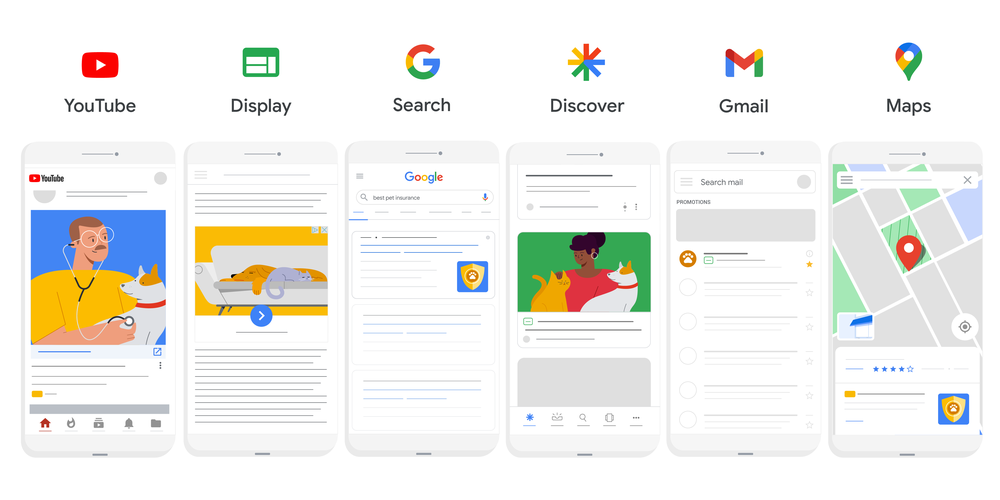 WHAT IS: Performance Max?
WHAT IS: Performance Max?
Performance Max is an all-in-one campaign type that can display ads across all of Google’s channels – YouTube, Display, Search, Shopping, Discover feed, Gmail, and Maps.
Note: Smart Shopping and Local campaigns will be depreciated later this year and be rolled into Performance Max shortly. Local campaigns are different from Local Service Ads which will remain available.
WHAT IS: Different About Performance Max?
There are differences in campaign structure as compared to standard Search, Shopping, and Display campaigns. Most notably in terms of Structure:
- Ad Groups are replaced with Asset Groups, which are a combination of Ad Group and Responsive Display Ad in one place.
- Product Groups are replaced with Listing Groups, which work in a similar fashion.
Note: Unlike Smart Shopping campaigns, Performance Max can be used for Lead-Gen as well, it’s not just limited to eCommerce.
WHY: Performance Max?
For eCommerce retailers who’ve seen success with Smart Shopping, Performance Max takes it to the next level by adding additional placements and reach – acting as a Smart Shopping campaign with retargeting and prospecting display ads layered on top of it.
For Lead-Gen campaigns, Performance Max can deliver scale and efficiency that may be hard to achieve through Search and Display alone. At the same time, it’ll be really important to feed the system the correct signals so you don’t end up with poor-quality leads.
Now that we’ve established the WHAT and WHY. Let’s get into the HOW.
Upgrading from Smart Shopping Campaigns 🛍
If you’ve been using SSC, it’s recommended to use the 1-click upgrade tool in the Recommendations tab. Using this tool will sync the campaign’s historical performance in the back-end which skips the learning phase and enables Performance Max to hit the ground running.
You’ll want to double-check all campaign settings after using the 1-click upgrade tool: Locations, Asset Groups, Listing Groups.
Since Smart Shopping is much more limited in terms of the display ads component, you’ll likely want to add additional creative/copy to the Asset Groups. It’s a good idea to add Audience Signals too.
Note: The tool is found in the Recommendation tab in Google Ads.
Campaign Structure 🛠
What’s the best way to structure Performance Max? Unless you need to split into multiple campaigns for location targeting and/or budget allocation, it’s best to condense the campaign structure as much as possible. This allows the system more data signals to reach optimal performance.
At the same time, since there is no reporting on the Asset Group level, you might want to break out different products/services into separate campaigns for reporting purposes.
We typically segment Asset Groups into themes by product/service so the creative and copy will match the underlying products or services. For stores with few products, we try to condense as much as possible. Simplicity over complexity, always.
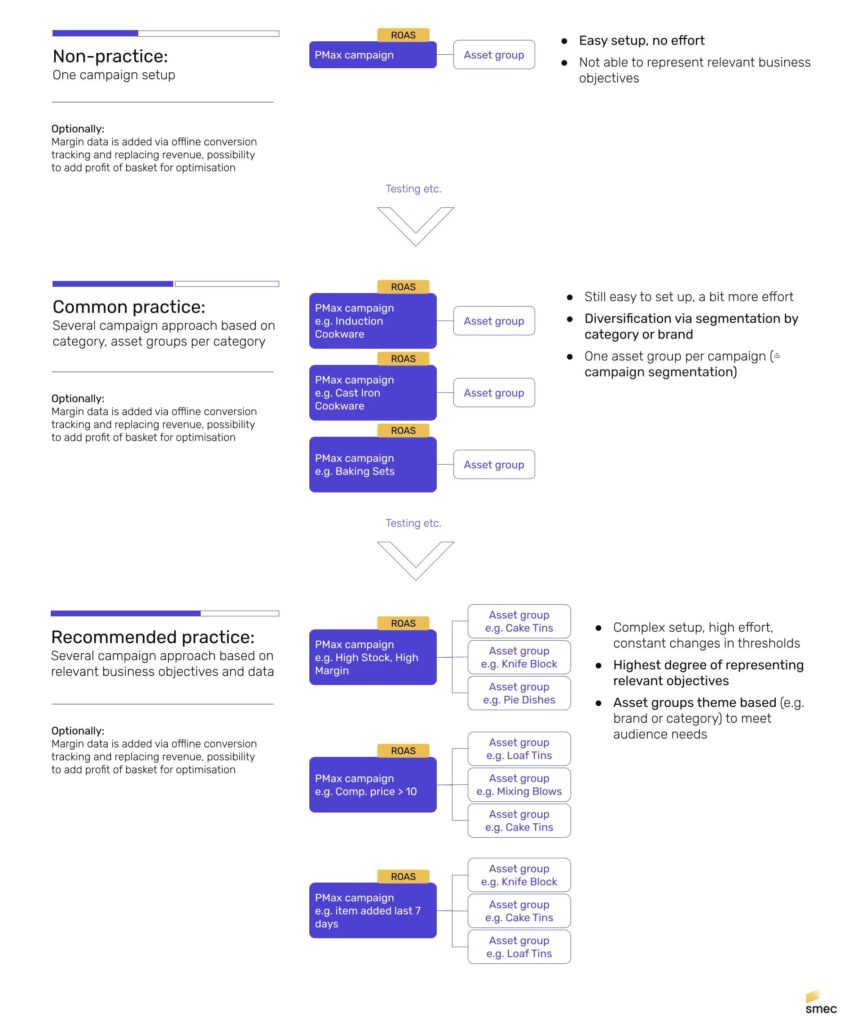
Conversion Goals 🎯
Choose the conversion actions that make sense for your business.
- eCommerce/Shopping: Choose “Purchases”
- Lead-Gen/Services: Choose calls, forms, and chats, etc.
Hot tip: Without offline tracking, the system will not be able to differentiate between good quality and poor quality leads. To improve lead quality, focus on calls over forms/chats. Calls only get recorded as a conversion if the duration is longer than 60 seconds.
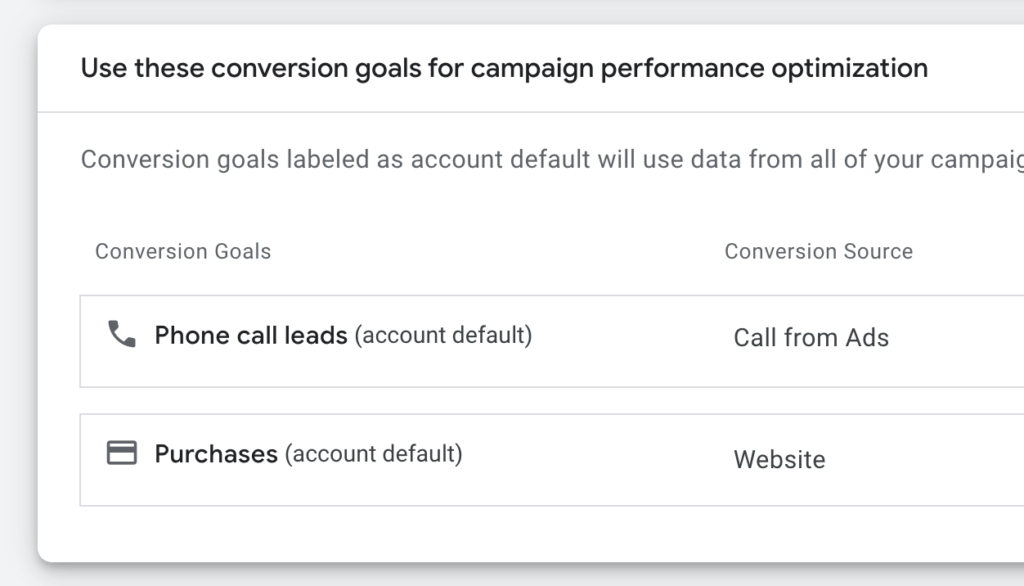
Location Targeting 🗺
When setting up your campaign, after choosing your targeted locations, make sure to select the following option under advanced options: “Presence: People in or regularly in your targeted locations.”

A gift from the Google Gods!!
Y’all, this is a big, big deal. I’m hopeful it’ll help crack down on all of the junk traffic we’re seeing in lead gen accounts specifically. Fingers crossed! pic.twitter.com/w36ZJMNAc1— Kasim Aslam (@kasimaslam) July 6, 2022
Asset Groups 🗾
Your messaging and creative assets should be tightly themed to the product or service within the Asset Group. Keep in mind that if you don’t provide a video, Google will make one for you, and it won’t be great. It’s highly recommended to create something basic using Canva or a similar tool.
For eCommerce: Something worth testing for Google Shopping, especially if you’ve seen success with Smart Shopping historically: Launch a Performance Max campaign with no assets aside from the datafeed.
“If a majority of your business comes from Smart Shopping and you’re dreading moving to Performance Max, clear all assets. Then you’ll get close to an SSC performance.”
An interesting tip from @AndrewLolk here.
More to come in our upcoming PPC Town Hall: https://t.co/7YC17eywgR
— Optmyzr.com (@Optmyzr) April 25, 2022
Note: You’ll need to create a new Asset Group as the system won’t allow you to save an existing Asset Group without minimal assets.
Exclusions 🛑
- Customer Exclusions: Upload your customer list and have the system exclude them from all targeting. This is useful if you want to focus on new customer acquisition.
- Negative Keywords: While you cannot add negative keywords in a Performance Max campaign, if you have a Google rep, they can block branded search terms for you in the backend.
Audience Signals 👥
Audience signals are different from standard Audience targeting. The system uses these audiences as a signal to find your ideal prospective customer, it won’t target them directly. We’ve seen success with the following:
Customer Match 📧
Start by uploading any lists you have including email addresses and phone numbers. This could be previous customs, email subscribers, etc.
Custom Intent 🔠
Build a list of your top performing keywords from Search and Standard Shopping
Interests 🏓
Target people based on pre-determined interests in Google Ads.
Website Visitors 🎯
Target users based on your account’s pixel data. Google will use your data of website visitors, leads, and purchases to target new customers.
Datafeed 📝
For eCommerce, the most important piece of the puzzle is the product information. While everything else helps, the datafeed submitted to Google Merchant Center can have the largest impact on your Performance Max campaign performance.
What’s the #1 thing you can do right now to improve your paid search performance? Optimize your Google Shopping Feed. The temptation to overspend time and money on branded keywords causes lots of brands to miss the mark.
Here’s how my team can help: https://t.co/PM5T3nycrn pic.twitter.com/3AEAY6WzX9
— Tony Chopp (@tonychoPPC) February 10, 2022
Make sure you’re submitting as much info as possible:
- Brand
- MPN/SKU
- UPC Code
- Descriptive Titles (include keywords!)
- Google Taxonomy/Categorization
- Product Type
- Multiple Images
- Custom Labels (for segmentation and reporting)
Bid Strategies 💰
Performance Max has the following two options available:
- Maximize Conversions (with optional target CPA)
- Maximize Conversion Value (with optional target ROAS)
If your account already has historical data, you can jump right into target CPA/ROAS. With a new account, I’d recommend starting with Maximize Conversions so the system can gather data. Later on, once you’re seeing steady conversions, switch to tCPA or tROAS to hit your goals.
At the end of the day, technology is always moving forward, if you don’t move with it, you’ll get left behind.
— Menachem Ani Ⓜ️
Signup to be notified when parts two and three are published:
- Setup
- Reporting
- Optimization

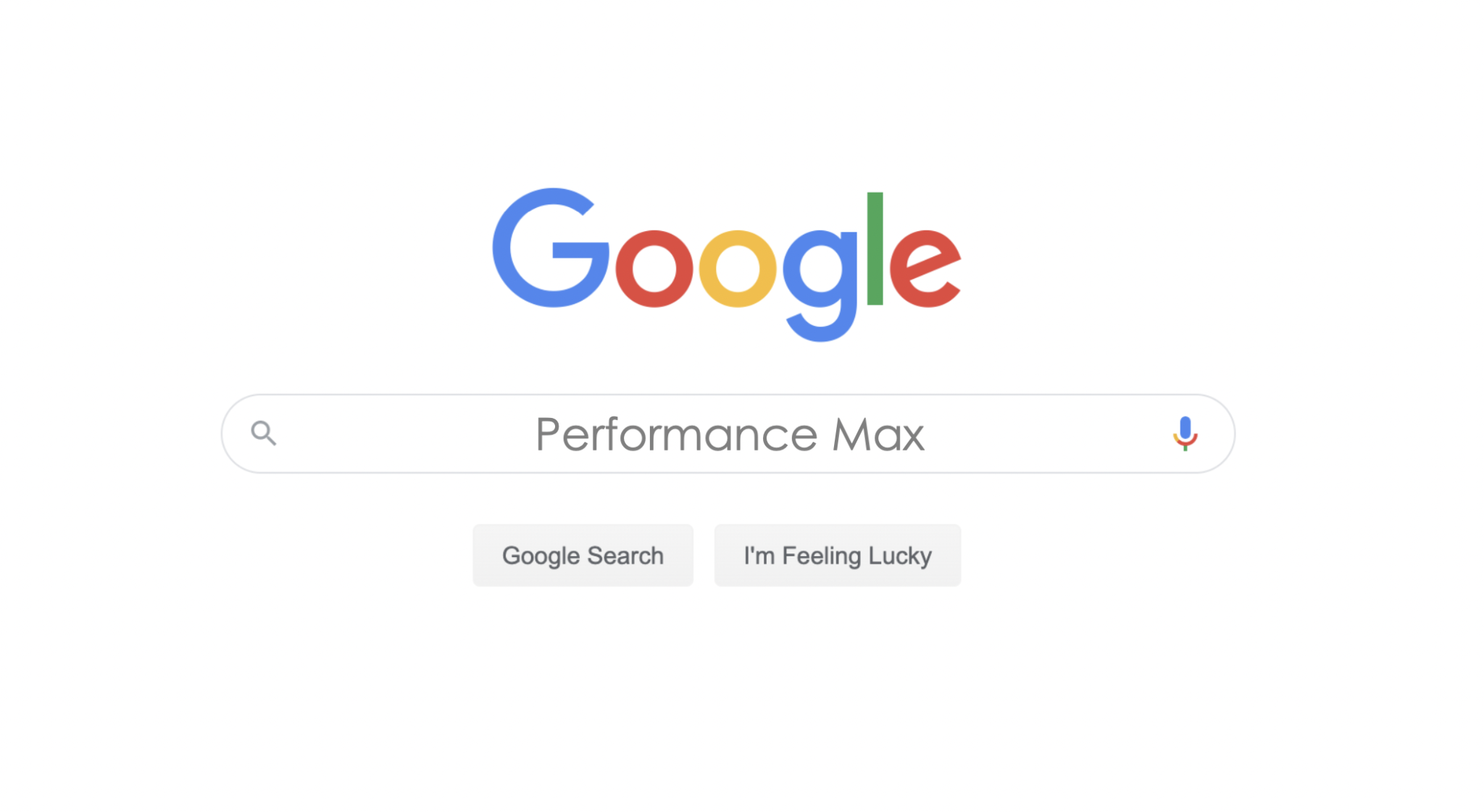
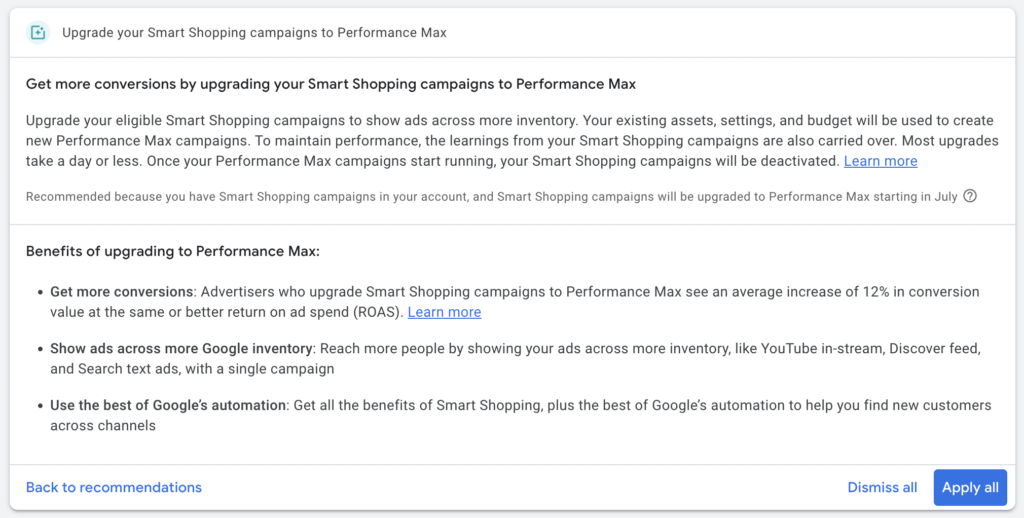
Pingback: ICYMI - Great PPC Posts You May Have Missed This Week - July 29, 2022 - PPCChat